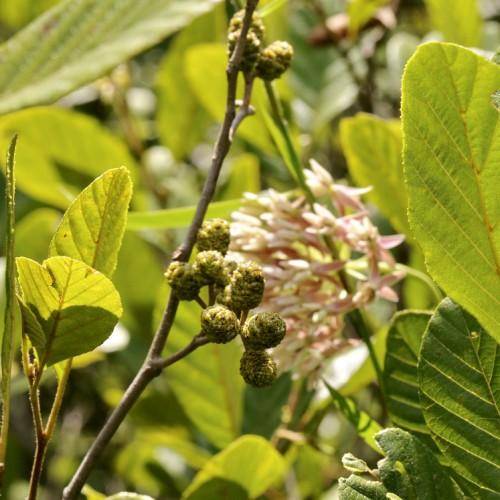
hazel alder
Alnus serrulata
Also Known As - Hazel Alder,Smooth Alder,Common Alder,Smooth Alder,Common AlderCycle:
Perennial
Watering:
Average
Hardiness Zone:
4 - 9
Flowers:
Flowers
Sun:
full sun
Fruits:
Fruits Ready In Fall
Leaf:
Yes
Growth Rate:
Low
Maintenance:
Low
Drought Tolerant:
Yes
Salt Tolerant:
Yes
watering
Hazel alder (Alnus serrulata) should be watered weekly to insure healthy growth and development. Water when the top 1-2 inches of soil feel dry and water until the soil is slightly saturated. Aim to keep the soil moist, but not overly wet or soggy. During the summer months, you should water the plant twice a week. During the winter months, water Hazel alder less frequently and only water when the soil is dry.
sunlight
Hazel alder is a species of deciduous shrub or small tree that thrives best in full sun to partial shade. It can tolerate direct sunlight for most of the day with some midday shade during the hottest summer months. For best growth and health, it should receive at least 6-8 hours of direct sunlight each day. The recommended sunlight levels for this plant species are similar to the common sun exposure of plants found in temperate regions. In extreme heat and other unfavorable conditions, it may need more shade or a break from direct sunlight in order to avoid damage to the plant.
pruning
Hazel alder should be pruned in the late winter or early spring before new growth begins. To maintain the desired shape, remove dead and broken branches at any time. Remove crossed branches, branches that rub against 1 another, and branches that grow inward. Make sure to leave 3 to 5 leader branches which will form the outline of the overall shape of the tree. To open up the canopy for light and air, selectively remove overlapping branches. Be sure to keep the overall shape of the tree in mind while pruning.
